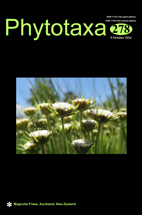Abstract
This work presents an updated checklist of the Bignoniaceae from the Brazilian state of Rio Grande do Norte (RN), and information on the patterns of geographic distribution of individual species within two RN biomes. Forty-three native species distributed in 18 Bignoniaceae genera were recorded for RN. The species richness found for RN in this study was 43% higher than previously documented, indicating the great need of additional biodiversity studies in Rio Grande do Norte. Of the 43 species listed, 27 were recorded in the checklist of Brazilian plants, while 16 species represent new occurrences. Three additional species were included in the checklist of Brazilian plants (which listed 30 species of Bignoniaceae for the RN); however, specimens of these taxa were not located for RN during this study and are not included in the final checklist presented here. The collection effort carried out for this work led to an improved knowledge of species distributions in the two biomes found in RN: the Caatinga dry woodland and the Atlantic Forest. The number of species found to be restricted to each biome and the absolute number of species occurring in the Caatinga dry woodland expanded considerably. All new species records were found in small herbaria from the RN state, emphasizing the importance of regional herbaria for an improved understanding of biodiversity patterns. This study highlights the importance of intensive identification efforts in small regional collections, combined with well-planned fieldwork for an accurate estimation of species richness in poorly studied areas of Brazil.

